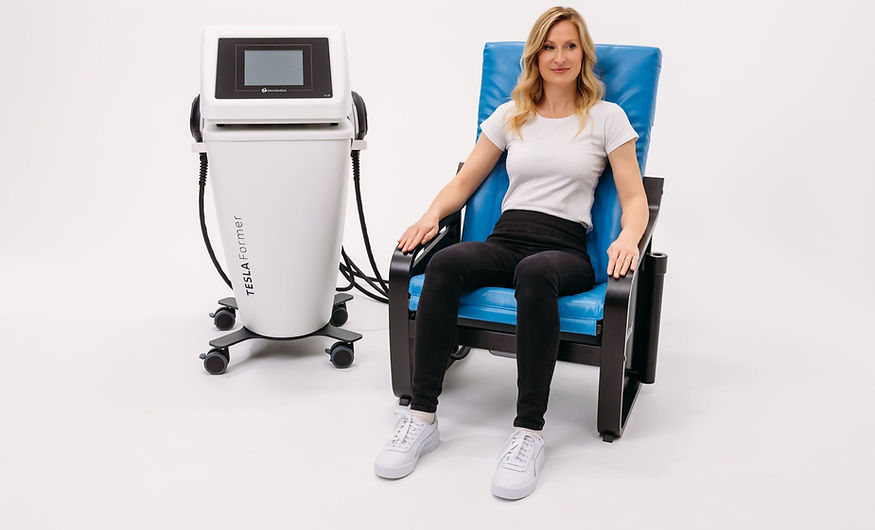
TESLA FORMER THERAPY
Waitākere Health Hub now offers Tesla Former Chair therapy, an advanced, non-invasive treatment that uses Functional Magnetic Stimulation (FMS) to strengthen deep pelvic floor and core muscles. This evidence-based technology supports people experiencing urinary incontinence, pelvic floor dysfunction and core instability - without the need to undress or perform exercises.
TESLAChair Functional Magnetic Stimulation
Pelvic floor strengthening for incontinence, core stability, and rehabilitation
Clinical benefits
Tesla Former Chair therapy has been shown to help with:
-
Stress urinary incontinence (SUI)
-
Urge incontinence and overactive bladder
-
Postpartum and post-surgical muscle recovery
-
Pelvic organ prolapse (mild to moderate)
-
Rehabilitation after prostate surgery
-
Erectile dysfunction and sexual health
-
Core muscle strengthening for back pain support
Key advantages
Tesla Former Chair therapy is easy
-
Non-invasive and fully clothed
-
No downtime or recovery needed
-
Comfortable 30-minute sessions
-
Safe and FDA-approved technology
-
Suitable for both men and women
How it works
The Tesla Former Chair delivers high-intensity magnetic pulses that induce deep, painless contractions in the pelvic floor and abdominal muscles. One 30-minute session produces thousands of supramaximal contractions, which help restore muscle tone, support bladder control, and improve postural stability.

Build
muscle
Back pain and pelvic floor strengthening
Active contraction of groin and gluteal muscles
Pelvic and erectile function
Body sculpting with TESLAFormer
TeslaFormer is a non-invasive medical device used to strengthen and rehabilitate muscles in the glutes, abdomen, hamstrings, arms, and pelvic floor. It utilises Functional Magnetic Stimulation (FMS)—a clinically validated technology that activates deep muscle groups by delivering pulsed magnetic fields.

These electromagnetic pulses stimulate motor nerves, causing involuntary yet effective muscle contractions in the targeted area. Repeated sessions can enhance muscle tone, improve functional performance, and increase muscle mass - especially beneficial for those with muscular weakness due to injury, inactivity, or pelvic floor dysfunction.
-
Gluteal strengthening
-
Abdominal and core toning
-
Hamstring and leg rehabilitation
-
Arm muscle conditioning
Key clinical uses include:

Key Benefits of TeslaFormer Therapy
-
Builds and strengthens deep muscle groups
-
Enhances fat metabolism and body contouring
-
Acceleration of lymph flow
-
Reduction of cellulite
-
Improves posture and core stability
-
Lifts and tones the gluteal muscles
-
Improvement of microciruclation
-
Helps maintain fitness with minimal effort
-
Supports pelvic floor and functional rehabilitation
Why choose TeslaFormer?
-
Non-invasive and pain-free treatment
-
No downtime or preparation required
-
Over 50,000 muscle contractions in one 30-minute session
-
Uses safe pulsed Functional Magnetic Stimulation (FMS)
-
Hands-free system - no operator needed during treatment
-
Backed by clinical research for muscular strengthening and rehabilitation

